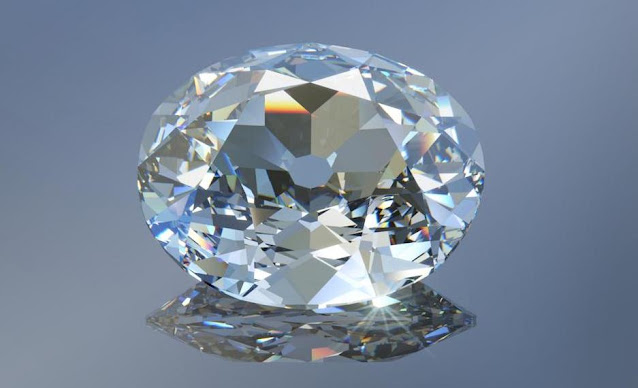 |
| Photo: Baunat |
 |
| Prince Duleep Singh |
 |
| Replica of Kohinoor Diamond before recut |
Queen Victoria (and Prince Albert) were quite taken with and became lifelong friends of Maharaja Duleep Singh (and later on with his daughters). The British Queen showed Prince Duleep Singh his lost diamond. Reportedly the 16-year-old Maharaja grew silent with emotion while holding and twirling it for 1/4 hour in his hands ... surely recalling how it belonged to his family and was later seized from him at a tender age.
After Queen Victoria's death, the Koh-i-Noor was added to the Crown Jewels. It was mounted in the crown of Queen Alexandra, the wife of Edward VII to use during her coronation in 1902. Queen Mary (wife of George V) and Queen Elizabeth (wife of George VI) also used the Koh-i-Noor Diamond in their coronation crowns. Due to its enduring controversy, the diamond was removed from the crown for Queen Camilia's coronation in 2023.
Ever since India gained its independence in 1947, there have been cries to return the Koh-i-Noor Diamond to India. Pakistan, Iran, and Afghanistan also claim ownership resulting from the diamond exchanging hands as a spoil of war by the victors of those countries over the years.
 |
| Photo: Baunat - how the Kohinoor compares in size to other well-known gems |
I realize how hair-splittingly difficult it is to determine what is the right thing to do after centuries of the Koh-i-Noor Diamond's complex history, however IMHO, India has the strongest argument for ownership. As a Westerner, I'm biased towards wanting the diamond to stay in the Tower of London, but there's no doubt the diamond was acquired as the spoil of war under the strongarm of colonialism coupled with the coercion of a powerless 11-year-old boy ruler to sign it away. In the 21st century, an 11-year-old cannot sign legally binding contracts or treaties.
I also recognize the fear of opening a Pandora's Box by returning the Koh-i-Noor Diamond to India. Granted, not everything in history can be made right because time makes it convoluted and impossible to correct every wrong. I think we must go on a case-by-case basis. Just because righting a wrong is challenging doesn't mean it should not be attempted.
 |
| Click here for this photo credit: Duleep is seated, left of the future King Edward VII, at the time of the photo, still Prince of Wales. |
Yikes, now Pakistan will dislike me for thinking that India has the strongest suit ... as it also has a logical claim. In modern times before 1947, there was only India, a colony of the Britain Empire. In 1947 the British colony became two independent states of India and Pakistan. Punjab was divided by religion, with the western portion becoming Pakistan, and the rest of Punjab becoming part of India So it's a judgment call. Perhaps all 3 countries with the royal family could sit down at the table to decide.
So what do you think? Great Britain has it, but who should own the Koh-i-Noor Diamond? A difficult and problematic question for sure!
*The timing of the East India Tea Company was not by chance. Whenever a boy ruler comes to the throne, other powers who want control of a country's land or treasures use the country's weakness as the time to strike. The head of the mighty East Indian Tea Company, Lord Dalhousie, said he targeted the Koh-i-noor Diamond with the aim of giving it to Queen Victoria to be added to the Crown Jewels as a symbol of conquest. An elaborate ceremony occurred for the 11-year-old Maharaja to hand over the jewel as a sign of his submission to the Crown. After recutting it, Queen Victoria wore the Koh-i-Noor Diamond as a brooch. It became part of the Crown Jewels soon after her son Edward VII became King.
Duleep Singh's mother was exiled to Napal and her son was adopted and raised by British diplomat John Spencer Login and his wife whom the boy grew close to, and it was a warm, trusting relationship. They took him on tours of Europe.



























